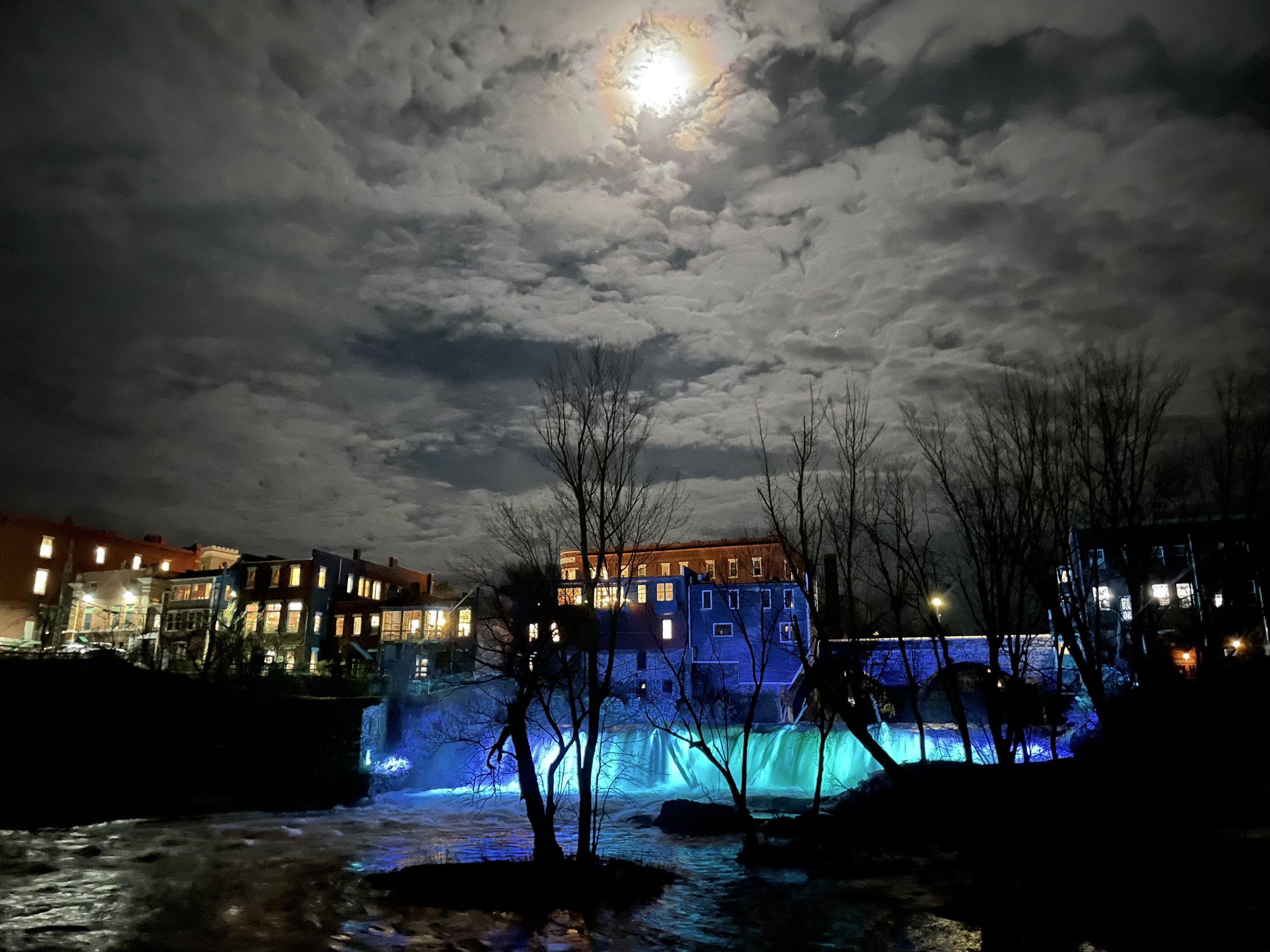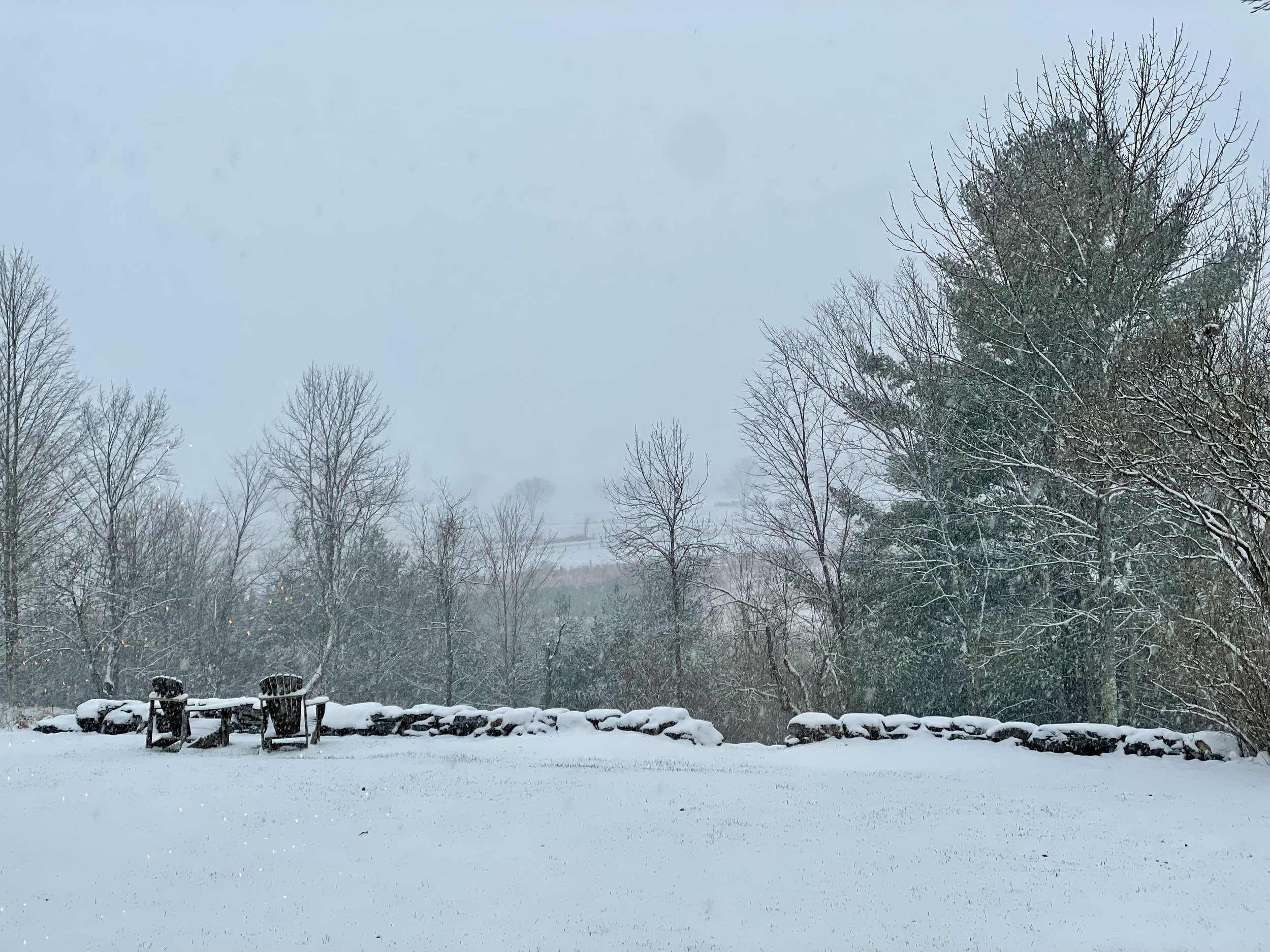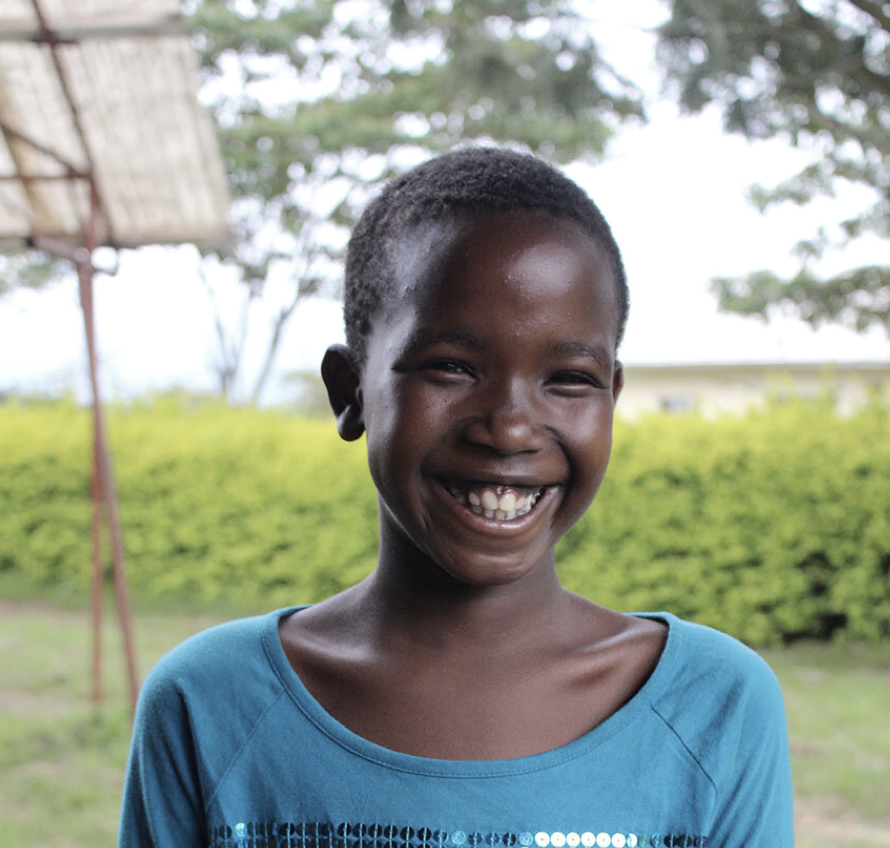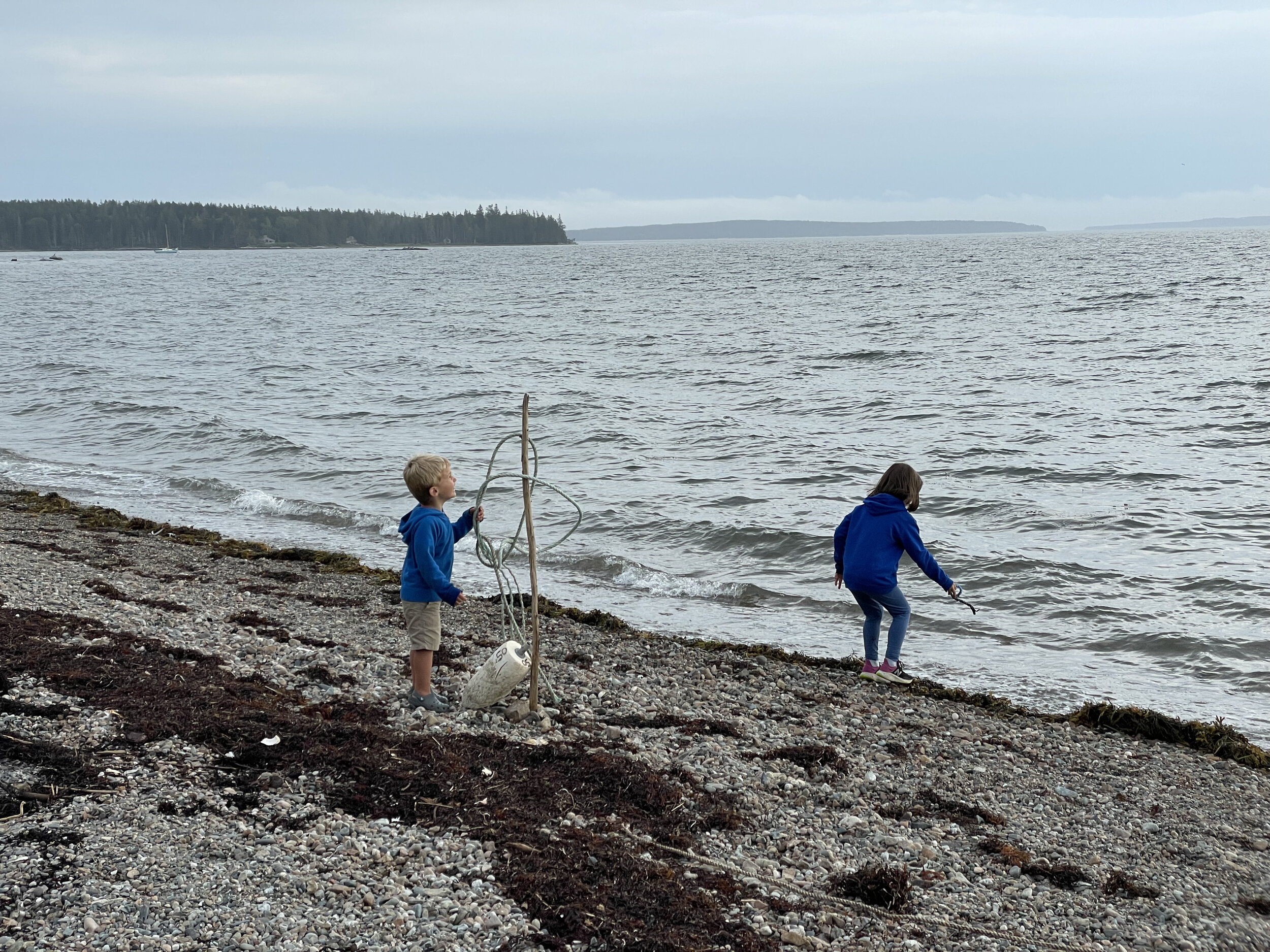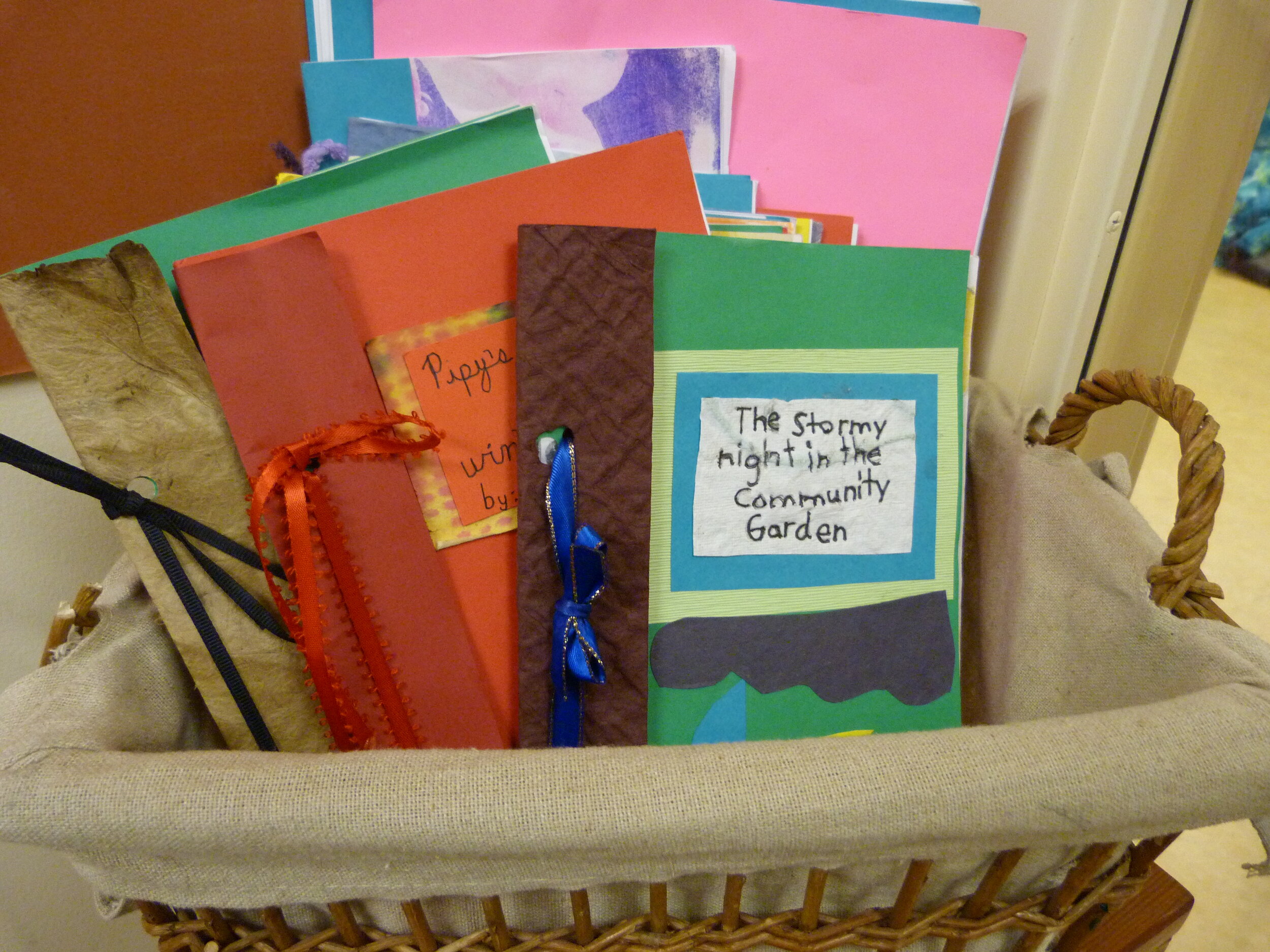Midd Night Stroll December, 2021
On Tuesday, December 21, we will mark the winter solstice, light candles and fires, and experience the dark on the shortest day of the year. In addition to fire, another source of great light in the darkness is the longest full moon of the year, visible for 15 and half hours, 14 and a half of those hours while the sun is down. NASA reports that the December Cold Moon will appear full for almost three days.
Today it is snowing, our first real snowstorm, so we won’t see the full moon tonight. We have a fire in the fireplace and the lights on the tree are twinkling.
I have been thinking so much about beauty at this time of year… in nature, in human beings, in art, in miracles. We have recently attended several arts and performing arts events that celebrate both the darkness and the light. Yesterday we attended the opening of a show entitled “Knowing Darkness” at a local gallery, Northern Daughters. One of the featured artists, Hannah Sessions, is the daughter of dear friends, and also a celebrated Vermont cheese maker!
In an interview in our local paper, The Addison Independent, Hannah is quoted:
I am reminded of a quote from a song by Anais Mitchell that hangs in my kitchen,
“Some birds sing when the sun shines bright,
But the one who sings in the dead of night,
The ‘dead of night’ can, of course, be literal or metaphorical. We might enter the ‘dead of night’ when our life circumstances feel overly challenging or taxing…when we are spiritually depleted or we are deeply sad or discouraged. The approaching of literal winter has not always been easy for me. That time before the snow flies and calls us outside; the time when the day ends impossibly early, and darkness can feel never ending and oppressive. What keeps us singing? As I have resolved to relish the shorter days, I have appreciated the opportunity this show has presented: an opportunity to embrace the darkness and find unique beauty in it. I have found the subtle hues of the late day sky, the warmth and life that emanate from barn windows in the dark, and the sparkle of stars. These are all wonderful things this time of year, the dead of night, possesses.
Hannah Sessions, available work
Last night I went to see a local performance of “Amhal and the Night Visitors” in a small, simple church in Salisbury, Vermont. I was absolutely stunned and transfixed by the performance. The acting, the voices, the candle lit church, the simple set, the beauty of this music and the generosity and magic of the story. I remember listening to this short opera story about a poor boy and his mother visited by the three kings with my mother, Christmas after Christmas. It turns out that it was first broadcast on television from NBC studios in New York City in 1951, commissioned by NBC and composed by Gian Carlo Menotti.
Continuing on with the theme of art…last week I was lucky enough to spend a day with my childhood friend, Eliza Rathbone. We visited the Cape Ann Museum where I had never been. It is a joy to be in any museum with Eliza because she grew up in a family where the history of art and artists were part of her daily life. She is Emeritus Curator of The Phillips Collection in Washington D.C. She is currently curating a show for The Cape Ann Museum on Mark Rothko, Adolf Gottlieb and Milton Avery, their friendship, and the work that they did on Cape Ann and the coast in Gloucester, Massachusetts.
Eliza told me…”I want every detail to be accurate, I want the show to contribute to the lasting body of work on each of these artists, and I want people to have some kind of revelation..to learn something that they never knew before.”
I reflected on what Eliza said on my way home to Vermont. I realized that, in some ways, all these things are important to us in our work with teachers in schools. Of course, we want to accurate in all our research, recommendations, references, relationships. And we want to contribute to teachers’ and students’ lasting learning, their way of approaching learning and living in school, their frameworks and worldviews. And, we want teachers to have revelations and awakenings to what is possible in school when wonder and joy are present in abundance.
On this shortest day, and in this season of darkness, we wish you all joy and awakening to the new year which we all hope will be full of light.
I conclude with the poem entitled The Shortest Day, by Susan Cooper, recited every year at the Christmas Revels wherever it is performed.
And so the Shortest Day came and the year died
And everywhere down the centuries of the snow-white world
Came people singing, dancing,
To drive the dark away.
They lighted candles in the winter trees;
They hung their homes with evergreen;
They burned beseeching fires all night long
To keep the year alive.
And when the new year’s sunshine blazed awake
They shouted, reveling.
Through all the frosty ages you can hear them
Echoing behind us—listen!
All the long echoes, sing the same delight,
This Shortest Day,
As promise wakens in the sleeping land:
They carol, feast, give thanks,
And dearly love their friends,
And hope for peace.
And now so do we, here, now,
This year and every year.
Welcome, Yule!


